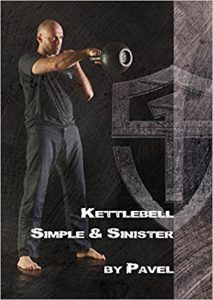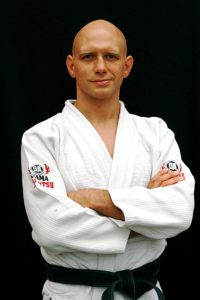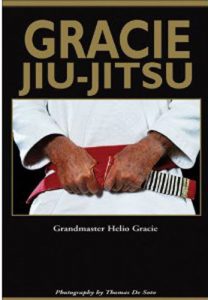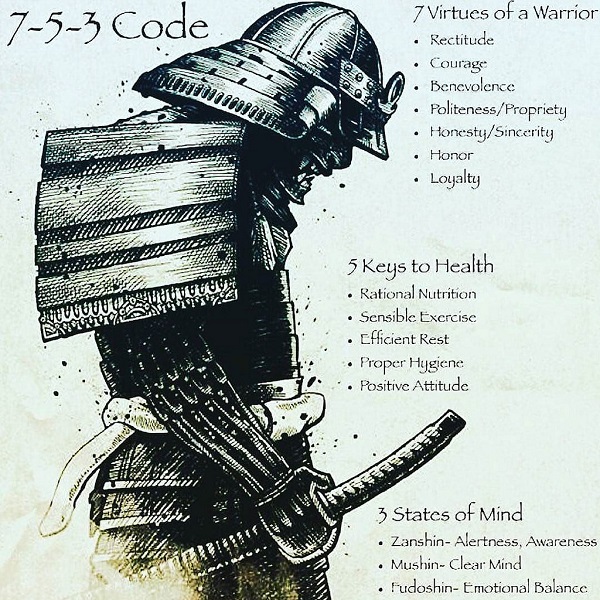 I’ve tried various workout routines to improve my jiu jitsu over the past couple of years. I was a big fan of the Strong Lifts 5×5’s, and was doing that routine for a while, and though I got stronger it didn’t seem to transfer to the mat that well for me. I was trying to get in a few days of weight training, and a few days of jiu jitsu every week, but the 5×5’s were leaving me too tired to train that hard in jiu jitsu. I also didn’t feel that the type of strength I was getting from 5×5’s was what I needed to improve my jiu jitsu game. It occurred to me that what I was really looking for was muscular endurance rather than adding more weight to my max reps. A friend at the jiu jitsu school I attend suggested I try Pavel’s Simple and Sinister program (among other Kettlebell exercises). I tried it and found that it was exactly what I needed. I’ve modified the routine somewhat, but doing this workout has dramatically improved my endurance during jiu jitsu rounds, and the best part is that it doesn’t leave me too spent the next day so that I can actually train jiu jitsu without dealing with DOMS. Here’s what I’m currently doing:
I’ve tried various workout routines to improve my jiu jitsu over the past couple of years. I was a big fan of the Strong Lifts 5×5’s, and was doing that routine for a while, and though I got stronger it didn’t seem to transfer to the mat that well for me. I was trying to get in a few days of weight training, and a few days of jiu jitsu every week, but the 5×5’s were leaving me too tired to train that hard in jiu jitsu. I also didn’t feel that the type of strength I was getting from 5×5’s was what I needed to improve my jiu jitsu game. It occurred to me that what I was really looking for was muscular endurance rather than adding more weight to my max reps. A friend at the jiu jitsu school I attend suggested I try Pavel’s Simple and Sinister program (among other Kettlebell exercises). I tried it and found that it was exactly what I needed. I’ve modified the routine somewhat, but doing this workout has dramatically improved my endurance during jiu jitsu rounds, and the best part is that it doesn’t leave me too spent the next day so that I can actually train jiu jitsu without dealing with DOMS. Here’s what I’m currently doing:
Drill and Improve Through Injury
John Lawrence from Hurricane Jiu Jitsu shows how to improve your game while recovering from an injury:
Kyle Dake Study by Dan Sweeney
In addition to being a tough Jiu Jitsu competitor, Dan Sweeney is known for making great analysis videos.
Here is a playlist of informative breakdowns he did of NCAA Division I champ, Kyle Dake:
How to Build a Grappling Dummy Intro
When I first started Jiu Jitsu I was looking for any advantage I could gain to speed up my progress. I found that too often life got in the way of me getting to the mats more than a few days a week. I would sometimes make it to open mat and find someone willing to do a little drilling, but as we all know, drilling quickly turns into full out rolls.
I wanted to find a way to drill at home by myself. I learned some solo drills (check out Henry Akins solo drills for some good ideas for drilling at home: Henry Akins Solo BJJ Drills), and these helped some, but I really wanted to get a grappling dummy to practice my moves on. The grappling dummies I found online were pretty pricey (if you’re interested in checking those out, here’s a link: Grappling Dummies on Amazon), so I thought it might be fun to try to build one myself and save a little cash.
In doing so, I tried to document as well as I could my process in building the grappling dummy. I created a website and YouTube video which shows the steps I took to build it. You can find it here: Build a Grappling Dummy
I used this dummy a lot as a white belt. I don’t use it as much now, but it does still come in useful when I want to solidify a confusing move that I had learned in class. I think for the amount of money that I spent building this grappling dummy it has served it’s purpose well. If you decide to build one I hope it works out well for you too.
Jiu-Jitsu as Meditation
One of the main skills I’m trying to acquire in my life is the ability to disengage from the endless internal chatter that my mind perpetually generates. This chatter tends to be a non-stop feedback loop of repeated ideas which at best revolve around mundane day to day tasks that need to be completed and at worst focus on any negative thoughts I may have about myself, others or situations. That inner critic can be crippling, and the more I can dissociate with it, the more clear minded and emotionally centered I tend to get.
I do practice meditation, though I haven’t been practicing it for long, and certainly not as consistently as I probably should be. It helps, quite a bit, but I often find myself slipping into “auto-mode”, where hours can go by without me really being in control of my own thoughts. Gurdjieff talked about waking up from this robotic existence by continuously focusing your attention on a small body part (such as your right hand pinky). Doing so forced your brain into the moment, and practicing doing this was supposed to cultivate the same mind-state that meditation does.
What I’ve discovered is that Jiu-Jitsu has the same affect on me.
In Jiu-Jitsu our class is typically divided into 3 sections: warm-up, instruction, and sparring. After a long day at work I’m usually wanting to go home and lay down. The last thing I want to do is get entangled in a difficult workout. But I always force myself to go. At first during the warm-up the thoughts that usually come up in my mind are along the lines of: “I’m tired, too tired to be doing something so difficult”, “I had a really rough day at work, I should be home trying to enjoy myself”, or “I should really be spending my evenings trying pursue the new career that I want”.
Maynard James Keenan and Brazilian Jiu Jitsu
Revolver Magazine has released a 4 episode video series with Tool/A Perfect Circle/Puscifer frontman Maynard James Keenan. In the 4th installment of the series Maynard discusses why he does jiu jitsu, his wrestling background, and the importance of doing what your heart tells you to. You can view the video in the link below.
Revolver Magazine – Maynard James Keenan Interview
Maynard has been doing Jiu Jitsu since the 90’s, when he first saw the UFC and decided to start training. In the video he says that he found Rickson’s school and began attending class there. In various other interviews he talks about the difficulties with training while on tour, and how that has slowed his progress as a jiu jitsu practitioner. I find it encouraging to hear that he worked through his delays and is still training. In my training I sometimes have breaks due to illness, injury or just responsibilities getting in the way, which can be frustrating. It’s always helpful to hear stories about sticking people with it, and moving ahead at whatever pace life allows them.
And if there is any doubt about Maynard’s abilities, check out this beautifully executed Judo throw on stage:
Continue reading “Maynard James Keenan and Brazilian Jiu Jitsu”
The 7-5-3 Code
The 7-5-3 Code is a philosophy developed by the Valente Brothers in the tradition of providing warriors with values by which to live their lives. It is largely inspired by the samurai principles of Bushido, the code of moral principles observed by ancient Japanese warriors. Bushido (literally: “the way of the warrior”) was originated to temper the everyday violence of the samurai’s training and vocation with a moral code of conduct by which they could conduct themselves. The samurai developed this code to keep themselves from straying too far from a righteous path.
As practitioners of Brazilian Jiu Jitsu, we face humility every time we step on the mats, and this tends to help ground us in our daily lives. Still, studying a code of conduct can further cement within us the principles of right living.
The 7-5-3 Code is broken into 3 sections: The 7 Virtues of a Warrior, The 5 Keys to Health, and The 3 States of Mind.
Profile: Stephan Kesting – Jiujiteiro and Educator
 For anybody that has been around Jiu Jitsu for any length of time, chances are that they’ve stumbled across Stephan Kesting’s site GrappleArts.com. On his site, Stephan hosts a wealth of grappling information. He has established himself as top-notch educator in the art of Jiu Jitsu.
For anybody that has been around Jiu Jitsu for any length of time, chances are that they’ve stumbled across Stephan Kesting’s site GrappleArts.com. On his site, Stephan hosts a wealth of grappling information. He has established himself as top-notch educator in the art of Jiu Jitsu.
A little bit about Stephan, in his own words:
“I’m a Brazilian Jiu-Jitsu black belt, and have been doing martial arts for over 30 years. I am also a certified instructor in Erik Paulson’s Combat Submission Wrestling, a black belt in Kajukenbo Karate, an instructor in Dan Inosanto’s Jun Fan JKD, Maphalindo Silat and Filipino Martial Arts program. I’ve also studied Japanese Judo, Russian Sambo, various Chinese Kung Fu systems, Brazilian Capoeira, Muay Thai Kickboxing, and many other martial arts.” – Stephan Kesting – grapplearts.com
Continue reading “Profile: Stephan Kesting – Jiujiteiro and Educator”
Gracie Jiu Jitsu Master Text – Review
 Long known as the torch bearers of the modern martial arts world, the Gracie family revolutionized the sport of fighting, and are largely responsible for the popularity of Mixed Martial Arts today. To re-hash a commonly known history, Gracie Jiu Jitsu had it’s beginnings when a frail young man named Helio Gracie began teaching Judo at his brother Carlos’s academy. Helio found himself in a position to conduct his first class when Carlos Gracie himself was running late to teach. Carlos’s student, Mario Brandt, was waiting for his lesson, and rather than have him wait, Helio took over for his brother in his absence.
Long known as the torch bearers of the modern martial arts world, the Gracie family revolutionized the sport of fighting, and are largely responsible for the popularity of Mixed Martial Arts today. To re-hash a commonly known history, Gracie Jiu Jitsu had it’s beginnings when a frail young man named Helio Gracie began teaching Judo at his brother Carlos’s academy. Helio found himself in a position to conduct his first class when Carlos Gracie himself was running late to teach. Carlos’s student, Mario Brandt, was waiting for his lesson, and rather than have him wait, Helio took over for his brother in his absence.
From that first lesson Mario asked if he could continue lessons with Helio, and Carlos agreed. The rest, as they say, is history.
Carlos, being a small man, and ill of health, realized that the athleticism needed to be effective in the Judo/Jiu Jitsu currently being taught would need to be modified if it were to work for a person with his physical traits. From that came many years of experimentation, which gave birth to Gracie Jiu Jitsu.

